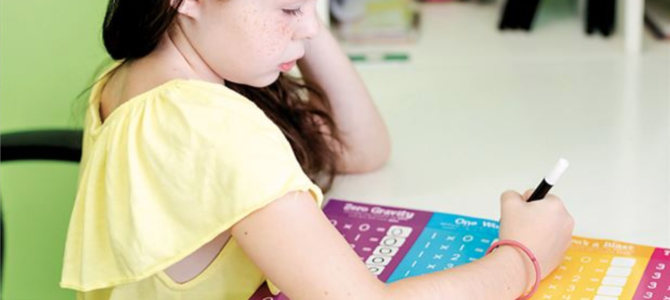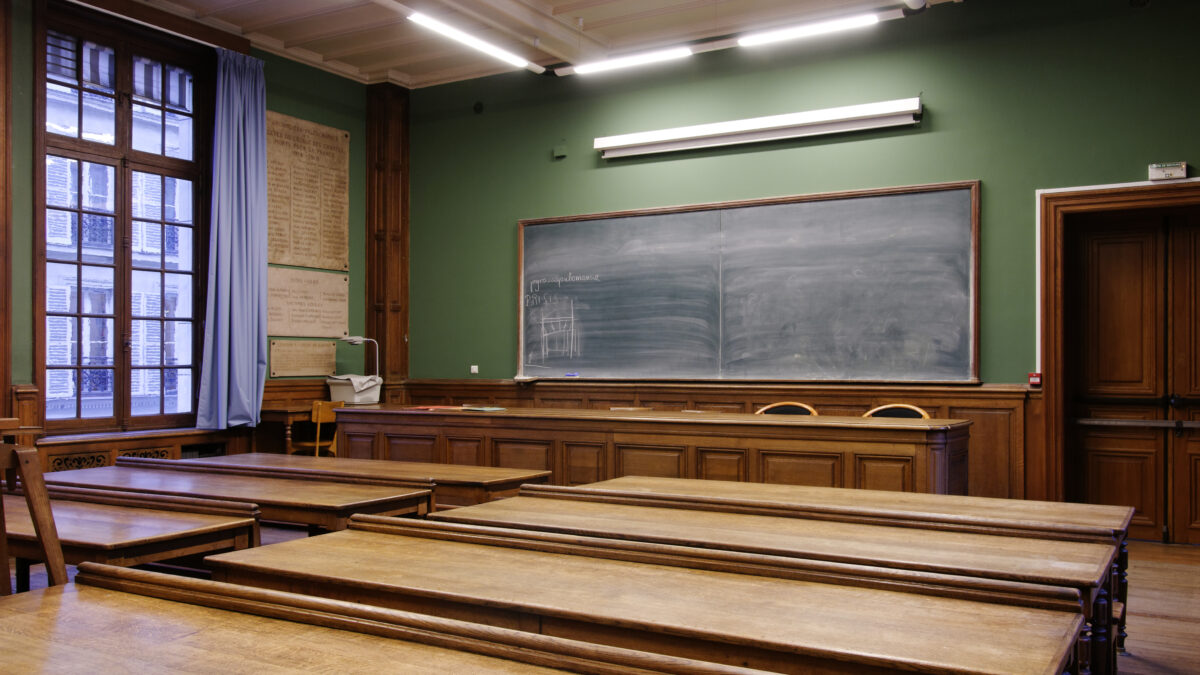
The coronavirus outbreak, with its consequence of school closures, serves as notice to the nation that it is past time to think differently about K-12 education.
The federal government’s formal response plan assumes this pandemic “will last 18 months or longer and could include multiple waves of illness.” During this period, schools may close then reopen, only to be forced to close again soon after, and so on. How might parents and schools best serve their students during such a back-and-forth between in-person schooling and homeschooling?
While they seek the best possible solutions they can for students, conventional public and private schools were not designed to operate in this manner. To thrive during this challenge requires conventional schools to look to a relatively new form of schooling designed to operate in just such an environment: “hybrid homeschools,” where students toggle between learning in school and learning at home.
What are ‘Hybrid Homeschools’?
This rapidly growing type of school has alternated between classroom learning and home learning for several years. It goes by many names: hybrid homeschools, college model schools, parent partnership programs, and others.
In many cases, students attend a brick-and-mortar school for two or three days per week, with teachers, desks, and the like. The other days, they are homeschooled. Some schools provide detailed lesson plans for home days; others leave it to parents to provide further educational enrichment activities. These parents often use the online resources available in homeschool communities.
Hybrid homeschools have shut down their face-to-face portion for the duration of the coronavirus “quarantine.” Even so, they provide a useful model for all schools to consider, now and into the next school year. Families who have adopted this hybrid homeschool model are facing less disruption than those using full-time schools. That these students already are used to operating as homeschoolers, at least part of the time, has smoothed the transition for many of these families.
Students face the prospect of less time in face-to-face classrooms over the next 18 months, meaning parents must become more involved in their children’s education. That sort of direct parental engagement is at the heart of hybrid homeschools’ educational mission. Conventional public and private schools will need to rapidly embrace more family-centered educational approaches, where parents are true partners, even leaders, in educating their children.
Immediate and full-time online schooling at the current scale is a response only out of necessity. Through no fault of their own, many conventional schools face significant hurdles. For example, the Wall Street Journal recently highlighted one reason: School systems may not count the work done at home because not all children have access to the online resources their schools provide.
This pandemic will pass, but potential new outbreaks — or at least the fear of them — will tarry globally for some time. Large institutions are notoriously slow to react to fast-changing crises, and that includes conventional schools of all kinds. This nation has been fortunate in that our decentralized society has allowed grocery stores and other merchants, health-care manufacturers, food pantries, charities, and individual public school districts and private schools to work to ease families’ burdens.
At their best, hybrid homeschools are an excellent example of small bands of civil society working together with families to educate their children. These “little platoons,” to borrow Russell Kirk’s phrasing, are crucial to many kinds of support. And hybrid homeschools have years of experience under their belts.
The model is more possible in states that operate a variety of school choice programs, and their tuition is usually reasonably low, less than $5,000 per year. Such low-cost models make these schools more plausible for more families. Many public schools can and do operate versions of these schools already, as programs within or as full entities themselves.
Possible Lessons from Hybrid Homeschools
For educators and administrators interested in becoming more flexible, what are some lessons from existing hybrid homeschools? What might interested parents consider about them as we close out this school year and head into the uncertainty of the next one?
Hybrid homeschools teach students flexibility. Students who attend these schools have practice with unstructured time and working on lessons at home, and with communicating with their teachers over email. In most conventional schools, students’ daily lives look fairly similar in 12th grade to the way they looked in elementary school.
In most hybrid homeschools, students gradually take on more responsibility for their own learning and assignments as they get older, to prepare them for college and the adult world. One national network of these schools calls this gradual shift in responsibility the “gift of time.” Any type of school implementing aspects of a hybrid system should take the opportunity to cultivate maturity and responsibility in their students.
Hybrid homeschools can produce academic quality in their lessons. Of course, individual schools vary in quality, but hybrid homeschool students’ online lessons do not typically keep them glued to a computer all day. Their lesson plans may be delivered to students and parents via an online system, but these lessons usually include reading, writing, working on projects, speaking about concepts with family members, or doing something outside.
Many conventional schools have moved to online materials and lack books now, but hybrids often require even more reading than their five-day counterparts, especially the large fraction that are classical in nature. The fact that students are home for more hours provides the time for them to do more slow, deep learning. Given the shift in at-home time everyone is facing, all schools could rediscover the value of slow learning and more reading.
Flexibility and family time are of great value. Research on these schools shows that parents often most value more time with their children and more flexibility with their day-to-day lives. This usually means the ability to visit relatives (something that is not as possible or recommended right now), or to feel less a part of the academic rat race. But many parents have said they want to be more engaged with their children’s academic lives, and, school aside, just to have more time with them.
As part of the research for my forthcoming book on hybrid homeschools, I spoke with parents, teachers, and administrators across the country. One school leader, who had experience in a variety of school settings, told me, “This kind of education has the indirect consequence of strengthening families.”
Conventional five-day schools might also take a step back from the frantic pace, worry less about test scores, and admit to the large amount of time that simply leaks away during school days. It’s good that some of that time is going back to families.
Parents really can produce quality academic results. When public school systems have experimented with this concept in the past, they sometimes place a lot of value on students having logged-in seat time for accountability purposes. This typically isn’t necessary. New research shows graduates of hybrid homeschools to be well-prepared for college, based on both their confidence and their college GPAs. Parents can support well-structured, content-rich lessons, especially if more of the content is simply reading and discussing ideas.
Small is beautiful. Although there are a few national networks of hybrid homeschools in the United States, individually these schools are usually relatively small operations. They can therefore be much more nimble than large institutions when crises such as sudden shutdowns occur. We have seen multiple breakdowns in our largest-scale institutions, and a lot of support for the most local ones. School systems could consider handing more autonomy to schools, and parents might look to smaller options.
Hybrid homeschools are still affected by state and local shutdowns. As someone who is currently “self-isolating” with my wife and seven children, one of whom is a high school senior, I feel this acutely. But as we think about the near future, these trying times are an ideal opportunity for more conventional public and private schools to implement hybrid homeschools in their communities as a model to better serve students and families.









